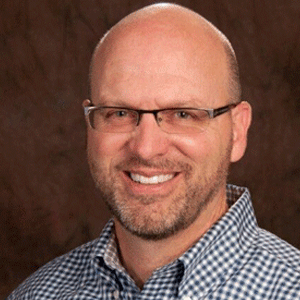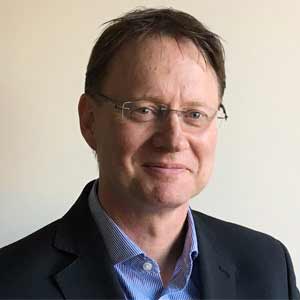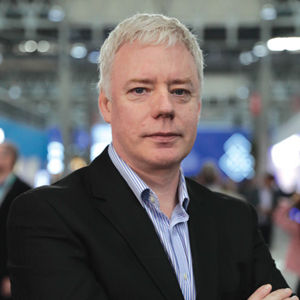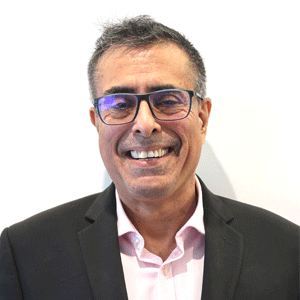THANK YOU FOR SUBSCRIBING
Editor's Pick (1 - 4 of 8)

Simon McFadden, Client Director, Data and Telco, Aurecon
A blockchain stores information across a network of computers that ensures data remains identical; it securely stores and validates information, can reduce cost, improve speed, and enhance productivity. Blockchain has the potential to transform business as we know it and it could enable us to launch companies entirely run by algorithms, helping protect online identities and track billions of devices on the Internet of Things. Its impact on buildings will change the spaces where we live, work, and play and how we amplify performance through data-enabled knowledge and insights. It will create value in the built environment through smart self-executing contracts between owners and operators, system components, system integrators, and construction management, including material tracking and payment. In the future, blockchain could connect the supply chain from planning to operation.
In the real world
Overall, the industry is still working quite traditionally and although the sector has considerable headway to make, there are many examples where emerging technologies are being harnessed to accelerate business transformation.
In Brooklyn USA, a blockchain powered initiative is seeing communities generating and trading energy, bypassing the electricity supplier, and providing a grid that functions independently, even during broad power failures.
In data centes—where typically one-third of the electrical demands could be from non-IT equipment such as cooling plant–Aurecon has explored ways to use sensors and machine learning to optimise the operation of equipment to reduce the electrical load, electricity costs, and emissions.
Other examples which show the industry is moving in the right direction include: Aurecon’s design of 200 sites for Australia’s new 5G network, a world-first fully digital hospital in Humber River, Canada, the use of blockchain for managing land records in India, and the development of a data centre that utilises wind farm generated energy. Aurecon is also exploring the utilisation of high-efficiency solar farms to link public and private sector partner organisations via blockchain and leveraging a battery source to power buildings in a private network that would not only be energy self-sufficient but also sell excess power to the grid.
We are also seeing increasing numbers of property owners doing simple things to improve tenants’ experience and business operations. Using the Internet of Things and sensors—to track temperature, lighting, power usage, numbers of people in a building—allows for different and more flexible leasing models, and also enables service level agreements around temperature, lighting etc. which competitors might not offer—creating an advantage for the early technology-adopter. This technology also enables a better understanding of the customer experience within the building.
These examples show the industry is on the right track. But with so many options and the technology evolving so rapidly, it can be overwhelming to know where to begin, how to prioritise initiatives, and how to identify technology that works best.
Overcoming the hurdle of choice
Asking the right questions at the outset is crucial—What decisions are possible? What data do we need? How will we manage it? How will it be connected? What are the priorities? Who owns the data? When will the data be transmitted? How will we share it? When will we share it? How do we change? Should we do it in-house or outsource?
Asking the right questions will also help mitigate risk. The Internet of Things will provide more entry points for hackers. To prevent or mitigate attacks, building developers need to consider cyber-attacks early in the design process and right through operations. Investment is also required to ensure that a building’s systems remain secure.
Also crucial is early engagement (before procurement), embedding people in the business who understand the technology, can decipher good from bad advice, and run procurement and partnerships. Flexible strategies and engaging in a number of different partnerships to help connect the building will also become more important over time.
But the single most important ingredient is working through the aspirations of the end-users. Informing the strategy will be what technology is available now and what might be available in the future, but it must have a business purpose behind it. With end-user goals at the heart, we can build systems with many sensors feeding into an operational model that uses machine learning to change settings in real time, to allow for better and more efficient operations. And a better user experience.
These technologies can be transformative. They can help to achieve business goals and create more human-centred spaces. But navigating the maze of technology is currently a major roadblock for the built environment sector. It’s time for greater change and it’s crucial for businesses in the built environment to adapt now. Those who are sensibly adopting these technologies will have an advantage over other businesses. Ultimately, failure to change will mean failure to thrive.
Weekly Brief
I agree We use cookies on this website to enhance your user experience. By clicking any link on this page you are giving your consent for us to set cookies. More info
Read Also
Cultivating a Sustainable Future through Collaboration
Jiunn Shih, Chief Marketing, Innovation & Sustainability Officer, Zespri International
Mastering Digital Marketing Strategies
Tasya Aulia, Director of Marketing and Communications, Meliá Hotels International
Building a Strong Collaborative Framework for Artificial Intelligence
Boon Siew Han, Regional Head of Humanoid Component Business & R&D (Apac & Greater China), Schaeffler
From Legacy to Agility Through Digital Transformation
Athikom Kanchanavibhu, EVP, Digital & Technology Transformation, Mitr Phol Group
Change Management for Clinical Ancillary Teams: Aligning Practice with Policy and Progress
Ts. Dr. James Chong, Chief Executive Officer, Columbia Asia Hospital – Tebrau
Digital Transformation: A Journey Beyond Technology
John Ang, Group CTO, EtonHouse International Education Group
Building A Strong Data Foundation: The Key To Successful Ai Integration In Business
Richa Arora, Senior Director Of Data Governance, Cbre
Transforming Tollways Through People, Data and Digital Vision
Carlo Cagalingan, Chief Digital Officer and Chief Information Officer, Metro Pacific Tollways Corporation






















